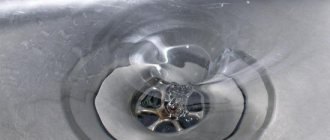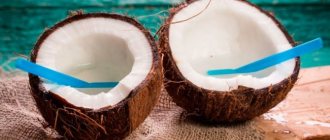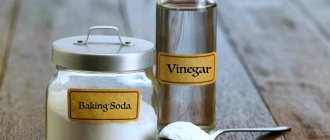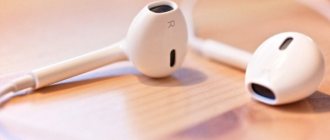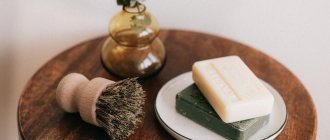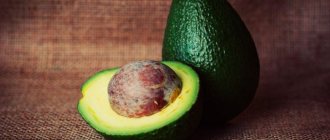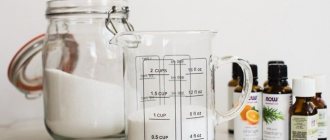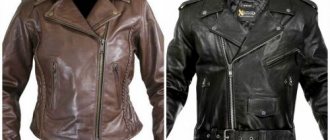Many people prefer to use liquid soap: some like this consistency, others like that it foams better and is softer than regular soap. Another advantage is that you can easily make it yourself. And at the same time, making good liquid soap at home is easier than making bar soap.
Materials and tools
The most important material is a bar, soap remnants, and a soap base. It can be purchased at any store that sells ingredients for creating cosmetics. It happens:
- colored, transparent, translucent or white;
- hard, soft, plastic;
- made from vegetable oils or vegetable based;
- varies in foaming: there is a base that foams little, and there is a high level of foaming;
Since the base is the main component, it is better to choose a high-quality base: without SLS, plastic, not subject to cracking and soaking.
If bar soap is used as a soap base, then it is better to choose a neutral baby soap without fragrances or dyes.
What other materials are used:
- Vegetable oils. So, if soap remnants are taken as a basis, then natural vegetable oils help make the composition nourishing, moisturizing, and softening. The most commonly used oils are olive, almond, peach and jojoba oils. For a better effect, you can make a mixture of oils. Oils are selected depending on skin type.
- Essential oils. They have a more intense effect. Many people believe that phytoessences are added to homemade soap as a flavoring agent. Indeed, they add aroma to the composition, but their main effect is not the smell, but nutrition, hydration, and healing of the skin.
- Pigments. There is no need to use dyes for homemade cosmetics. However, the aesthetic side is also important to many. To give the composition color, you can use organic dyes, which are bought in soap stores.
- Supplements Most often, honey and glycerin are added to liquid soap: they soften the skin, make it more moisturized and smooth. It can also be various extracts, aloe, green tea, clay.
Important! The oil concentration in the composition should not exceed 5%, otherwise the product will not foam and cleanse the skin.
As for the tools, you will need:
- Pots of different diameters for a water bath. The best materials for making cosmetics are stainless steel and glass. But it is better not to use aluminum cookware and plastic products.
- Wooden or metal spoons (sticks) for mixing.
- Measuring instruments, such as kitchen scales.
- Jars and bottles for storing finished cosmetic products.
Homemade Soap Ingredients
Liquid soap is a product of the chemical industry, which is similar in properties to shampoo. It contains synthetic surfactants, fragrances and components that soften the skin.
The properties of the liquid product depend on the composition.
What components should be contained in liquid soap?
| Group of substances | Component Examples | Operating principle |
| Surfactant | sodium stearate sodium lauryl sulfate alkanesulfonate methyl sulfate | dissolves contaminants and facilitates their removal |
| the basis | coconut or palm kernel oil, soap base | used in soap making as a basis for other components - surfactants, softeners, adsorbents |
| softeners | glycerol honey oils (almond, olive, burdock, grape seed, coconut) | prevent the evaporation of moisture from the surface of the skin, increase the fluid content in epidermal cells |
| flavorings | fragrances essential oils citrus extract | gives liquid cosmetics a pleasant aroma |
| antiseptics | chlorhexidine lemon juice alcohols | destroy pathogenic microorganisms |
| dyes | synthetic dyes mineral pigments beta carotene | paint the liquid mass in different colors |
| abrasive particles | ground coffee coconut flakes salt semolina | remove dead skin cells from the epidermis |
| other fillers | herbal infusions Activated carbon citrus juice fatty acid vitamins | provide additional properties - wound healing, deodorizing, anti-inflammatory, adsorbing |
A homemade liquid product is a good alternative to bar soap, which dries out the skin. Homemade cosmetics contain much less harmful ingredients than store-bought ones. Therefore, it is better for caring for sensitive skin.
Store-bought liquid cosmetics are a petroleum product containing low-quality components.
If you make your own soap, you can use almost any ingredients, avoiding harmful fillers - plasticizers, preservatives, mineral oils, silicone.
Cooking recipes
Basically, liquid soap is made using the hot method. But there are also recipes without heat treatment, that is, cold cooking.
Liquid soap made from soap and glycerin
This is one of the simplest recipes. When you have collected a sufficient number of soap remnants, you can make a moisturizing cosmetic product based on them. To make moisturizing liquid soap, for 200 g of soap you will need:
- hot water (half a glass);
- glycerin 2 tbsp;
- lemon juice 1 tsp.
Cooking method:
- We rub the soaps or simply break them into small pieces.
- Fill with hot water.
- Place in a water bath.
- When the mixture becomes homogeneous, remove it from the bath.
- Let cool and add the rest of the ingredients.
- Leave the contents for two days, shaking the container periodically.
- Pour into a bottle. The cosmetic product is ready!
Liquid soap from an ordinary solid bar
From a bar of ordinary solid soap you can make a liquid product with the properties you need. We'll look at a basic recipe with glycerin, but you can add any other fillers. This recipe does not require boiling the soap, but a blender is required for blending.
To make bar soap you will need:
- hard block;
- boiling water (1 cup);
- glycerin 1-2 tbsp;
- essential oils.
Cooking method:
- We warm up the block a little, for example, on a radiator, so that it softens.
- We rub it with a grater.
- Pour boiling water and grind in a blender into a homogeneous mass.
- Add glycerin and essential oils (for example, 3-5 drops of lemon oil).
- Let the mixture sit for half an hour, then add a little purified cold water (2-3 tablespoons) and beat again.
Liquid soap from baby product
Baby soap is chosen as a base for its neutral composition. In this recipe we will look at how to prepare a liquid product using the cooking method. We also take the same amount of ingredients. To make the composition nutritious and softening, add more oil, for example, olive.
Cooking method:
- Leave the soap on the radiator for a while or keep it in the sun to soften it.
- We rub the block to make shavings.
- Pour water into a saucepan, pour in the shavings, place on low heat and cook while constantly stirring to obtain a homogeneous mixture.
- Remove the foam.
- Add glycerin.
- If desired, you can add honey and essential oils.
- Mix thoroughly and pour into a bottle or other container with a dispenser.
Important! All utensils and containers for preparing cosmetics must be clean, disinfected and dry.
Liquid laundry soap
You can use laundry soap to make a liquid hand wash. Laundry soap better removes odors and cleans and disinfects. Therefore, soap based on it is used to cleanse hands from strong dirt and odors. For example, you can use it to wash your hands after cleaning fish to completely remove the smell. To prepare liquid soap from laundry soap we will need:
- block 1 pc.;
- hot water 100 ml;
- table vinegar 2 tsp;
- castor, olive oil 1 tbsp each;
- vitamin E in oil 1 tsp;
- glycerin 0.5 tbsp;
- chlorophyllipt oil 1 tsp;
- lemon, tea tree or lavender essential oil 4 drops.
Cooking method:
- Grate the block, pour boiling water over it, and leave for 20 minutes.
- Add oils and mix thoroughly.
- Add vinegar and mix again.
- Add the rest of the ingredients.
- Beat with a mixer or blender into a homogeneous mass.
- At the end, add essential oils.
With herbs
We prepare this cosmetic product according to a traditional hot recipe, but instead of boiling water we use a decoction of herbs. For example, chamomile, mint, sage, calendula or any other of your choice. Rub the soap into shavings, leave it in the broth in a water bath, then add fillers.
With essential oils
We prepare a liquid product with essential oils using the same recipe. You can use any oil depending on the tasks you set for the soap. For example, lavender and lemon oils have a good effect on the skin, tone it, even out the tone, and have a softening effect. If you plan to use essential oil only as a fragrance, then you can use pine or vanilla oil to prepare liquid soap.
Important ! Oil is added at the very end, when the composition is removed from the water bath and cooled.
Soap with antiseptic effect
At home, you can make liquid soap with an antiseptic effect. Essential oils of tea tree, mint, cinnamon, cloves, and eucalyptus have an antibacterial effect. To make antiseptic soap with your own hands, take:
- hot water 150 ml;
- solid soap shavings 50 g;
- glycerin 1 tbsp;
- jojoba 0.5 tbsp;
- Tea tree essential oil 5 drops;
- EO of eucalyptus and mint, 5 drops each.
Cooking method:
- Pour boiling water over the shavings and place in a water bath.
- After dissolving, remove the mixture from the bath and cool.
- Add glycerin and a mixture of essential oils.
Nourishing soap with vitamins
In order for liquid soap not only to cleanse, but also to soften and nourish the skin, in addition to glycerin and base oil, add one ampoule of solutions of vitamins A and E to it after removing the dissolved shavings from the water bath.
Tar soap
Tar soap is one of the best for caring for problem skin. Tar is known for its anti-inflammatory, antibacterial, healing properties. Liquid soap can be made from pharmaceutical tar.
For 30 g of soap base we will need:
- 250 ml water;
- tar (half a tsp);
- glycerin 1 tsp.
Cooking method:
- Dissolve the base in a water bath.
- Add glycerin and tar with constant stirring.
- Let cool. If necessary, add purified cold water.
- Beat with a blender or mixer.
Completely natural product
There are several ways to make all-natural soap: the first is to use a neutral soap base, the second is to use potassium hydroxide as a base. We have already considered the first method, let's consider the second.
We will need:
- potassium hydroxide 300 g;
- jojoba oil 74 g;
- castor oil 270 ml;
- purified water 920 ml;
- coconut oil 670 g;
- olive oil 280 ml.
Important! Since this recipe uses potassium hydroxide, that is, alkali, prepare this composition using gloves.
Cooking method:
- Add lye to water in small portions. In no case is it the other way around, otherwise a chemical reaction will occur!
- Pour the resulting solution into the oil.
- Beat the mixture with an immersion blender until it becomes thick and smooth.
- Place on low heat. Cook the mixture over low heat for about 6 hours until you have about 500ml of a clear paste.
- Add water, stir.
Product for household needs
You can make liquid laundry soap using a simple recipe for washing dishes or washing clothes.
We will need:
- bar 200 g;
- 2 liters of water;
- 1.5 kg of soda.
Cooking method:
- We grate a bar of ordinary laundry soap.
- Bring water (0.5 l) to a boil.
- Dissolve the shavings over low heat.
- Separately mix soda and remaining water.
- Combine both parts and mix.
- The detergent is ready!
Which liquid hand soap is best?
Homemade liquid soap is chosen as a replacement for bar soap, which dries out the skin after use. The advantage is obvious. In homemade cosmetics, harmful components make up a smaller percentage than in store-bought ones. Therefore, the quality of homemade liquid soap prepared independently is better. It is more favorable for sensitive skin.
Eco-friendly handmade soap without base and does not contain synthetic components.
Interest in making soap at home is also caused by the opportunity not to use harmful ingredients, but to use pure natural ingredients.
Homemade soap making will bring benefits and creative satisfaction.
Warnings
If you use herbal decoctions and cream in soap, remember that you cannot store it for a long time. Be sure to monitor the condition of the product: if you notice that the liquid has become cloudy, there are traces of mold in it, or an unpleasant odor, then immediately throw away the product.
Many people throw away the soap that remains in the soap dish. But, as you can see, they can be put to good use and make a mild, but at the same time good cleanser. Making liquid detergent is a fairly simple process.
How do you like the article?
What is liquid soap made from?
The product, which is a liquid consistency, is similar in properties to shampoo, containing synthetic surfactants, fragrances, and skin softening components. The overall complex of components affects the properties of the composition.
A homemade product can also look beautiful and have an amazing aroma, but be one hundred percent natural.
- Liquid soap contains derivative products - potassium salts. For solid types, sodium salts are used.
- Fatty acids (oleic, palmitic, lauric, stearic) are added to the liquid composition. Manufacturers also include glycerin, which moisturizes the skin.
- Various dyes are used for coloring.
- Aromatics create a pleasant smell.
- Surfactants, which act as emollients, renew epidermal cells.
- Adding preservatives prevents the product from spoiling.
- To neutralize fungus and bacteria, antibacterial components are introduced into the soap.
- Adding emulsifiers softens water hardness.
- To give liquid soap the desired consistency and increase its viscosity, sodium salt of hydrochloric acid is added.
Soap base
After this, heat 3.8 liters of water on the stove. First, pour the liquid into a large saucepan and then light the heat to high. Remove the pan from the heat as soon as the water begins to boil.
It is best to use distilled or filtered liquid. After it boils, be sure to let it cool. It shouldn't be boiling - just hot.
Then pour the soap shavings into the water and start stirring the resulting mixture. The soap should completely dissolve. How quickly this happens depends on the size of the flakes. The smaller they are, the faster they dissolve.
If you use handmade soap to prepare the base, add a teaspoon of glycerin: you can buy it at the pharmacy. If you are using a store-bought product, then pour in 2 tablespoons (30 milliliters) of glycerin and mix the resulting substance thoroughly.
Smooth and fresh skin: dermaplaning, or why a woman needs to shave her face
“We are still friends”: Derevianko commented on the breakup with his wife
A student at the Vietnam Police Academy shared how she takes care of her facial skin.
Coffee soap-scrub
If, while preparing liquid soap, you add ground coffee to the scrubbing ingredients, for example, you will get a good homemade scrub.
It requires the following components:
- 50 g soap or base;
- 4 glasses of water;
- 0.5 cups cream;
- 2 spoons of sugar;
- 1 spoon of ground coffee (additionally you can add the same amount of cocoa powder);
- 0.5 tablespoons of glycerin or any essential oils;
- half an ampoule of vitamin A and E.
Prepare a homemade scrub like this:
- Grind the soap or base.
- Mix water with cream and put on fire.
- Add the shavings and stir until dissolved.
- Add sugar, coffee and cocoa to the mixture. Mix.
- After cooling, add vitamins A and E, oil or glycerin. Mix.
Useful properties of laundry soap
Laundry soap is unattractive in appearance, but very useful and necessary. It is used for various purposes:
- washing dishes;
- cleaning floors and carpets;
- hand cleanliness;
- facial care;
- washing underwear, socks and other clothes;
- disinfection of wall surfaces, floors, stoves and equipment in the bathroom and toilet.
All natural soap
To be completely confident in the quality of your soap, it is best to prepare it yourself using natural ingredients :
- 100 g soap base;
- 2 liters of water;
- 1 tablespoon each of coconut, olive and shea butter.
It is prepared in the same way as other types of liquid soap:
- A special soap base is grated.
- The water is brought to a boil and the resulting shavings are carefully added to it, which are stirred until completely dissolved.
- Then add the prepared oil mixture. Everything is mixed well and used as intended.
Benefits of a homemade product
Liquid soap is considered more hygienic, since it is poured into bottles with a dispenser and does not come into contact with the skin, which is why harmful microorganisms cannot enter it. This product is universal, easy to use and economical. It not only cleanses the skin well, but also takes care of it carefully.
A store-bought product contains many artificial colors and flavors, but a homemade product can be created without the use of harmful substances. An essential oil that will benefit the skin will add a pleasant natural scent to the product without harming your health.
Further actions
Let the soapy water sit for 12-24 hours. During this time the substance will thicken. If you have the opportunity, stir the liquid every 20-40 minutes. Don't be alarmed if the soap starts to swell and rise. This is fine.
- The next morning, lightly beat the mixture with a whisk or immersion blender. To give the soap a uniform structure, it is enough to do this for a few seconds.
- If the substance is still too hard, add water and then stir again - this should correct the situation.
We make it ourselves “from scratch”
This is the kind of soap that is used in Turkish baths; it is in great demand among connoisseurs of natural cosmetics. Making liquid soap is not too difficult if you are patient and careful.
Main stages. Liquid soap is prepared with potassium hydroxide (therefore called “potassium”). The amount of alkali is calculated using special online calculators for soap makers. Each recipe must be calculated separately.
But for any recipe you will need:
- oil (in this case it is better not butter, but olive oil, for example, or sunflower);
- purified water);
- alkali KOH;
- superfat (for skin care);
- blender;
- heat-resistant pan with high sides;
- pH testers;
- protective apron, glasses and gloves.
Weigh all ingredients according to the recipe obtained on the calculator. Dilute the lye in water, adding small portions. Mix the reacted solution with the oils (pour it in), start blending with a blender.
Be sure to take breaks so that the mass stands at rest; this time is needed for a full reaction.
Knead at intervals until a so-called “trace” appears - like in butter cream.
The mass should be homogeneous and thick. Liquid soap in the usual sense is made after diluting with water.

